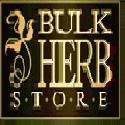
Ginsu Christmas

When he didn’t, I wound up my conversation and excused myself to see if he still needed me.
I walked into the kitchen to find Duke standing there with a sheepish expression on his face. He had a paper towel in his hand and said, “I messed up.” “What did you do,” I asked, my alarm growing. “I cut myself,” he replied. “How?” I asked. “I was trying to cut the toy out of the box with a knife. . . “ “WHICH knife?” I began to look around the kitchen. “That one,” he gestured towards the sink.
There, in the sink, was my Ginsu knife (as seen on TV). This is the one that you can stab holes into tin cans and cut through a pipe with. I like to use it to slice homemade bread thinly and had left it on the cutting board next to the loaf I’d been cutting for the meal. Apparently, Duke had lost patience with a pocket knife and the utility shears and then spotted the knife. Ginsu made quick work of the plastic ties that held the toy in its box. In his eagerness to free the toy, Duke also made quick work of the meaty part of his palm just below his thumb joint.
“Let me see,” I told him pulling back the blood-soaked paper towel. The wound was about an inch wide. This told me that it was quite deep as the knife had a double-pronged tip. In order for the cut to be that wide, both prongs had to have entered the wound. I cleaned the wound, stemmed the blood flow and then bandaged the hand with a plantain poultice. I could tell that it would need a stitch if he was going to work the next day. I could stop the bleeding, but any small bump would break it open again without stitches. To say that Duke wasn’t happy with this news was and understatement.
I didn’t have a suturing kit on hand – or a suturing needle and thread. This would mean a trip up to the urgent care near our home. We left our boys with their older brother, aunt, uncle and grandparents and told them we’d try to hurry. I bundled Duke into the car and tuned the car radio to cheerful music, hoping to lift his spirits.
At the urgent care, we pulled into the empty parking lot and walked to the door and read the note that basically said if you wanted to stab yourself on Christmas Day, you’d need to schedule your emergency before
We got back into the car. My next stop was the local fire department. I knew it was a long shot that they’d have a suturing kit, but it was worth a shot to avoid the hospital emergency room on Christmas day. Who knows? Maybe the urgent care people called ahead to warn them to turn off the lights. At any rate, they weren’t there. The building was locked.
Back in the car, Duke was becoming less concerned about his hand and more grumpy over his circumstance. I tried to lighten the mood, which only had the opposite effect. Duke figured he earned this grumpy, and he didn’t appreciate me trying to take it from him.
In one last-ditch effort to avoid the ER, we went by a local Doctor’s Care. They were closed also. We were heading to the hospital.
When we pulled in to the hospital parking lot, Duke exclaimed, “Look at all the cars! Let’s just go home.” I reminded him that he had to have stitches in order to work. He muttered something about me doing it myself. I told him I didn’t have the tools. He grumbled some more and slumped out of the car.
As we were signing in, a guy I’ll call Steve arrived with another man. Steve was clutching a dish towel for all he was worth and looked a little pale. The man with him had run red lights to get him there. Breathlessly Steve offered only nouns, “Electric knife, turkey, finger.” As he caught his breath, he added, “I dropped the knife as I was carving the turkey and then tried to catch it. It caught my ring finger. There was blood everywhere under the table. I can’t feel the tip.” He was a younger fellow and apparently wasn’t used to seeing his own blood on the floor. Duke, on the other hand, has had his share of mishaps and was more annoyed than frightened.
Of course, not knowing what they would (or wouldn’t) find under Steve’s dish towel, the receptionist quickly filled out Steve’s form and sent him straight to the back. They needed to see how seriously he had cut himself. He returned to the waiting room with a bit of gauze around the end of his finger.
At this point, I just had to laugh. I found myself sitting between one really grumpy Duke and a really scared Steve.
Steve’s relative had left him and gone back home to enjoy the bounty there. I found out that Steve had waited all day to eat because he knew that there would be a feast. He traveled more than an hour’s drive with his girlfriend (where was she?) and was helping carve one of two turkeys when he dropped the electric knife (and then caught it). Now, here he sat, alone with me and Duke. Steve was scared of blood & needles. “And the worst part,” he said, “Is that I didn’t even get to eat. I told them I hoped I didn’t ruin their meal with all of that blood.”
I laughed and said, “Steve, if they’re like our family, that is already cleaned up and they are eating. You’ll be lucky to get a taste of banana pudding.” “No,” he grinned. “MY family LOVES me,” he added dialing his cell phone. After he hung up, I asked, “Well, are they going to bring you a plate?” “No, they went ahead and ate. I think I heard them scraping out plates in the background.”
It was entertaining to me.
Meanwhile, Duke was getting more and more disgusted with the entire process. This process included signing in (which we had already done), triage (where the patient’s condition is assessed) and registration (where the hospital makes sure they will get paid). This meant that twice, Duke’s name was called and he got up expecting to go get his hand stitched only to be met with paperwork and protocol. Having me calmly explain the process only seemed to irritate him more.
Finally, they called us back. Duke was ready to register his complaint. He stormed down the hall behind the attendant, the countenance of his black mood darkening the cheery decorations. Previously smiling nurses and interns in Santa hats gave him a wide berth and wondered who was in trouble.
We were led to an exam room at the same time as Steve. Apparently, we were lumped in some sort of group by triage that was for ‘Christmas-self-injuries-in-need-of-stitches.’ As we waited to be seen, I could see the steam rise from Duke’s ears. I figured it best to try again to get him to relax. My attempts at light conversation were met with a series of comments about how all of this waiting was ridiculous for just some stitches, etc. etc. I tried to remind him that this was Christmas Day and we had only been there a couple of hours and that they needed to have the paperwork . . . .I could see it wasn’t helping so I told him, “Look, I know you’re mad, but I don’t want you to take it out on the next person who comes in here because THAT might be the person who will actually take care of your hand, and we don’t want to make THAT person mad. Besides, it isn’t his/her fault. If we’ve got to wait, why do we have to be miserable? I’m trying to pass the time pleasantly. What do you want me to do?” At this point, Duke used sign language that let me know he wanted silence. I granted his wish for about five minutes and then said, “Next time, let me use the knife.” I saw the twinkle return to his eyes as he said, “Yeah, I know what you’d do” as he drew his forefinger across his throat. “No,” I said, “THAT would be too quick.” And with that, he seemed to relax. Don’t ask me to explain Duke. I just enjoy him.
By far, the MOST unusual Christmas present I received was getting to watch up close the suturing process. I’ve studied it, but nothing beats a good visual aid. Besides, if it’s one of my kids or myself getting the stitches, I’m usually otherwise occupied trying to comfort the patient or avoid discomfort. Duke didn’t require my services in that regard, so I got on one side of the tray and asked LOTS of questions and got a nice lesson in suturing. Cool!
Poor Duke still had to stay long enough to sign papers even after they cleaned him up and listened to his heart. Finally, he was FREE!
 with great success as a treatment under the dressing.
with great success as a treatment under the dressing.  Duke hasn't had any discomfort after the initial soreness & has been able to work well with bandages to keep the wound clean. The comfrey root and other herbs in the salve really help speed healing.
Duke hasn't had any discomfort after the initial soreness & has been able to work well with bandages to keep the wound clean. The comfrey root and other herbs in the salve really help speed healing.































